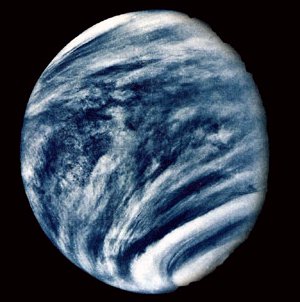Welcome to 2010 VEXAG Venus Workshop
| Announcements |
|---|
Workshop photos are now available. Enjoy!! |
Education Workshop: Promoting STEM Careers for Girls8:30am - 3:30pm | August 31 |
Free Public Program: "Impacts, Planetary Climates, & Venus!"7 pm| Tuesday, August 31 Featuring:Jan Smit |
Workshop Programis now available to view online. |
Travel Support for StudentsTravel support is available to a small number of students to attend this workshop. Please complete the Student Travel Information form prior to June 15, 2010. |

Venus was first visited in 1962 with the Mariner 2 fly-by and has been explored since then by Mariners 5 and 10 (Fly-by), numerous Venera (fly-bys, orbiters and entry probes/landers), Pioneer Venus (Orbiter, probes), VeGa 1 & 2 (fly-by, balloons and landers), Magellan (radar orbiter), Galileo (fly-by), MESSENGER (fly-by). Currently, Venus Express is returning new information about Venus as it orbits the planet, and the Japanese Venus Climate Orbiter ("Akatsuki") is being readied to be launched in May/June 2010 to orbit Venus in December 2010. In the nearly five decades since the Mariner 2 fly-by, we have learned much about Venus' dynamic atmosphere, yet a good understanding of how the Venus atmosphere works and how it interacts with the surface is lacking.
Major questions remain unanswered in dynamics, chemistry, surface-atmosphere interactions, radiative balance, climatology, and evolution of the Venus atmosphere. Here is a sampling of suggested topics for the workshop:
- Nature, process, and consequence(s) of surface-atmosphere interaction?
- Timing and cause of water loss from Venus' surface, and impact on atmospheric evolution
- Venus' runaway greenhouse effect and implications for Earth's climate evolution?
- Nature, period, an atmospheric impact of the global cataclysm that resurfaced Venus?
- Atmospheric dynamics, including origin of the superrotation of the Venus atmosphere, possible coupling between Hadley circulation and the hemispheric vortex circulation?
It is anticipated that the workshop will have a number of comprehensive presentations
that will assimilate available spacecraft and ground-based observations as constraints
to answering some of the major questions about the atmosphere of Venus. Extensive, lively,
and appealing poster sessions are also evisioned. Ample time will be reserved for discussions,
with a focus on addressing key unresolved questions using models and observations including
those from missions approved (JAXA's Akatsuki), under development (Russian Venera-D,
etc.) and yet to be proposed for future Venus exploration.
The workshop will also present an opportunity for fostering coordination between various
international missions to Venus to maximize science return. The workshop will be followed
by the 8th VEXAG meeting on 2 September 2010
The NASA/Planetary Science Division's newly formed Technology Committee will also meet
during this period in the same venue and location on 31 August and 1 September 2010.
With the pending Discovery Program AO expected this year and the activities of the National
Academy's Planetary Science Decadal Survey (2013-2022) underway, this workshop should
prove to be extremely valuable. Interested scientists and graduate students are encouraged
to attend. Travel support for qualified students is expected to be available (application
for travel awards will be posted at the VEXAG URL soon and announced through the Planetary
Exploration Newsletter).
Last Update: September 22, 2010

